Fence Opening Sizes By Animal Type
May 13th 2025
Fence Opening Sizes By Animal Type
To keep your garden, pets, livestock or just your yard safe from the wide variety of animals out there, opening size makes a difference! Below is a chart containing the most common animals our fencing is used for and what opening sizes are typical to keep them in or out.
Please use the information below as a guide, not a rule. This information is based on what we see customers purchasing for their application and may or may not be right for your project.
|
Animal |
Recommended Opening Size |
|
Rabbits |
1 inch or smaller |
|
Snakes |
¼ inch |
|
Groundhogs |
2 inches or smaller |
|
Deer and Elk |
Less than a 4-inch opening size |
|
Squirrels |
1 inch or smaller – needs four sides and a top |
|
Chipmunks |
½ inch or smaller – needs four sides and a top |
|
Feral Pigs |
2 inches or smaller |
|
Raccoons |
No-climb extensions, 2-inch opening size or smaller |
|
Dogs |
Depending on the type of dog, see below for more info – should include some overlap on the ground |
|
Coyotes |
2x4 steel, with overlap on the ground |
|
Cats |
No-climb extensions or enclosure, 2-inch or smaller |
|
Armadillos |
1-inch |
|
Horses/Cows |
2x4 inch fixed knot fence (woven wire) |
|
Goats |
2-inch |
|
Chickens |
½ inch or smaller |
Rabbits
There are approximately 16 to 29 different species of rabbits in the United States, with the most common being the Eastern Cottontail. They are expert foragers, getting into everything from gardens to patios. If it’s green, chances are they want it! So how do you keep them out? Rabbits may look larger due to their heavy fur layer, but surprisingly they can fit through a 1.5-inch opening. This is why when adding a protective layer to your garden in the form of a rodent barrier (or building a complete stand alone fence), we recommend a 1-inch opening or smaller.
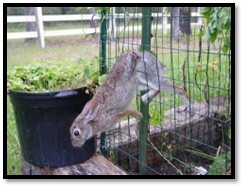 Photo of a rabbit passing through 2x2 fencing
Photo of a rabbit passing through 2x2 fencing
Snakes
From the west coast to the east coast and everything in between you will run into snakes. Each year, an estimated 7,000 to 8,000 people are bitten by venomous snakes in the United States. Keeping your family and pets safe from snakes should be a priority, especially in Southern states where snake populations are at their highest. There are a few ways to keep your yard snake free, including clearing piles of debris, keeping your lawn short, removing food sources such as controlling your mice/rodent population, and standing water. But the only way to truly keep them out is to put up a snake fence. The best snake fence you can install is a ¼ inch mesh or smaller to keep them out and away from you and those you love!
Groundhogs
Groundhogs (AKA woodchucks) are excellent diggers and can also climb decently, so how do you keep them out of your garden or out of your yard? The best groundhog fence is going to have a 2-inch opening size or smaller, with either 6 inches to a foot of mesh buried below ground or overlapped onto the ground and staked down. This will prevent them from being able to dig under the fence and get into your yard. While you can use a poly mesh, it is not recommended as it is not chew-proof. We see customers using a 2x4-inch or smaller steel barrier to keep them out.
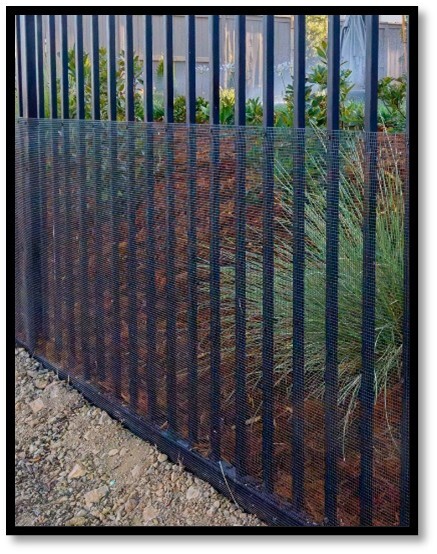
Photo example of small opening mesh over a aluminum yard fence
Deer and Elk
Compared to conventional fences, deer and elk fencing need to be very tall. Deer are excellent jumpers, so the best deer fence would be 7.5ft to 8ft tall. There are many options when it comes to deer fence types, whether polypropylene or steel. While you can use something with a 4-inch opening size, going smaller to a 2-inch opening size is best to avoid deer getting caught in the fence. Deer don’t have great vision and spook easily, using a smaller opening such as 2-inch will keep them from panicking and getting their legs stuck in your fence. The more invisible the fence is, the better! If they can’t see the fence, touching it will spook them, and if they can’t see the top of the fence they won’t try to jump over. This is why a top rail isn’t recommended. A top rail is framing along the top of the fence as found in chain link fence framework.
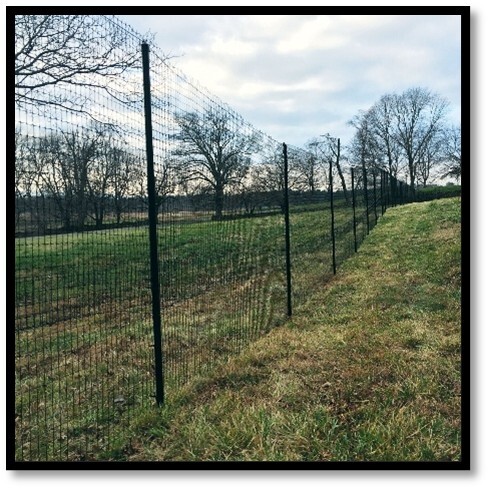
Squirrels
Squirrels are tricky to keep out; they can climb, chew, and find any gap in your fence to squeeze through to get to your garden. That’s why the best squirrel fence is going to be a complete enclosure (four sides and a top) using a 1-inch or smaller grid fence. Whether you use our enclosure kits, or attach mesh to a wooden structure, blocking every entry point is key to keeping them out.
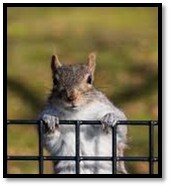
Chipmunks
Like squirrels, chipmunks are very tricky and can squeeze through small openings and climb into your garden with ease if you don’t have the right protection. Since chipmunks are considerably smaller than squirrels, a ½-inch opening size mesh is best for your garden enclosure. Unlike squirrels, chipmunks like to dig and can burrow, it is best to have 6 inches to a foot of fence mesh either overlapping the ground and pinned down or buried underground surrounding the area you want to keep them out of.
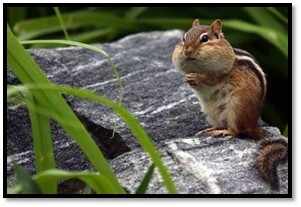
Feral Pigs
Feral pigs are not only prevalent in all parts of the United States, but dangerous and smart too! They can tear apart your crops and attack you or your pets if cornered. The best fence to keep them out will be a sturdy steel mesh, preferably using a 2x4-inch or even fixed knot fencing. Making sure this fence is installed properly with maximum strength is key, anything less and they are smart enough to take it down. Tensioning your fence and using a closer post spacing will increase the strength of your fence to make sure they stay out.
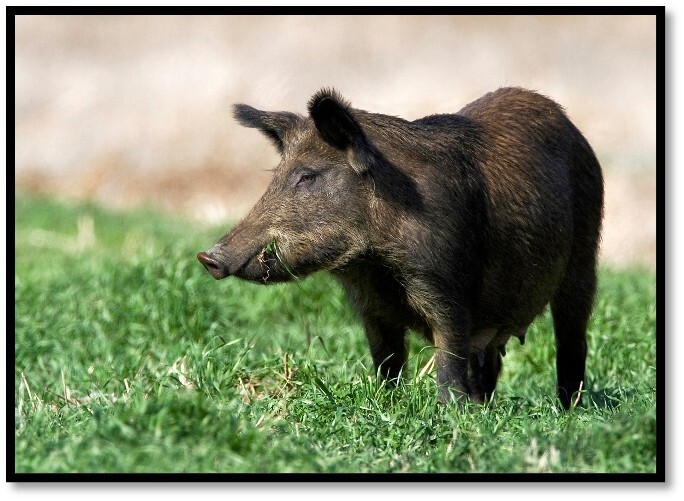
Raccoons
Raccoons are drawn in by outdoor pet food, compost piles, and garbage cans. Even with these areas being enclosed, once they know it’s there they will return! The best way to keep them out is with a no-climb extension. These can be added to an existing fence, whether it’s our fence system, wooden posts, or chain link. Combined with this, a rodent barrier is typically recommended as they are terrific climbers.

Dogs
Dogs are amazing escape artists, even with proper training they can be tempted to climb, dig, chew at, or even clear a fence! These factors will help you determine what type of fence will be best for your dog. Recommended is a fence with a dig guard, a smaller opening sized mesh to go along the bottom of the fence with 6 inches to a foot overlapping the ground (or buried) to prevent them from digging under the fence and a larger fence on top. Whether it’s a polypropylene to prevent them from gaining purchase (its flexibility will prevent them from having the support to climb) or steel mesh to be chew proof, you know your dog best. It’s always recommended to install a dog fence that is a foot higher than you believe you will need. Most customers go with a 5ft or 6ft fence, but some even go up to 8ft to make sure they can’t escape.
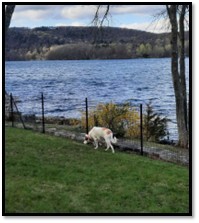
Coyotes
Coyote populations have skyrocketed in the United States, with the latest numbers hitting 4 million! Coyotes, like dogs, are excellent jumpers, diggers, and chewers. The best coyote fence is one with multiple layers of protection, including a 2x4 inch (or smaller, but you want the maximum strength) top layer ranging in the 6ft height or taller range with a dig guard along the bottom of the fence using a 1-inch or smaller mesh. When it comes to coyotes, you want to have at least 6 inches to a foot of mesh either buried or staked down in front of the fence so they can’t dig under and get in. Sometimes coyotes (especially when running) can climb up and over a 6ft fence. This is why it is also recommended you use a no-climb extension or bring your fence up to 8ft high in areas where the coyote population is high.
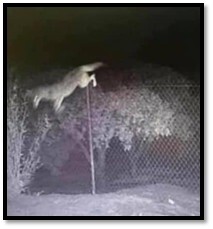
Cats
Cats are very good climbers and very sneaky! If you aren’t planning on enclosing an entire area for your cat (such as a catio), no-climb extensions are the way to go. The main things to note when creating a cat-proof fence is location, your cats size, and the predators in your area. Most cats wouldn’t be able to fit through a inch opening size mesh, but typically we recommend using 1x1 inch steel. Cats are also very good at scouting areas to find any escape, so make sure your cat fence isn’t near trash cans, large trees, or canopies. Like raccoon fencing from before, you will want a no-climb extender if you are trying to secure your yard. Unlike raccoon fencing, you will want the no-climb extensions to be installed on both sides! This will keep your cats safe from predators and other cats, while keeping your cats inside the yard and safe.
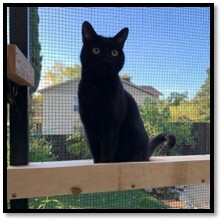
Armadillos
Luckily armadillos don’t need a super heavy-duty fence to keep them out, whether you want to install a mesh along the bottom of an existing fence, under your porch, or a perimeter fence, it doesn’t need to be huge! We typically suggest a 1-inch opening size steel mesh, around 2-3ft tall, depending on the area you need protecting. Since armadillos’ burrow, it is also suggested to either overlap 6-inches of mesh along the ground and stake down or bury the mesh at a 45-degree angle to prevent them from digging under and getting in.
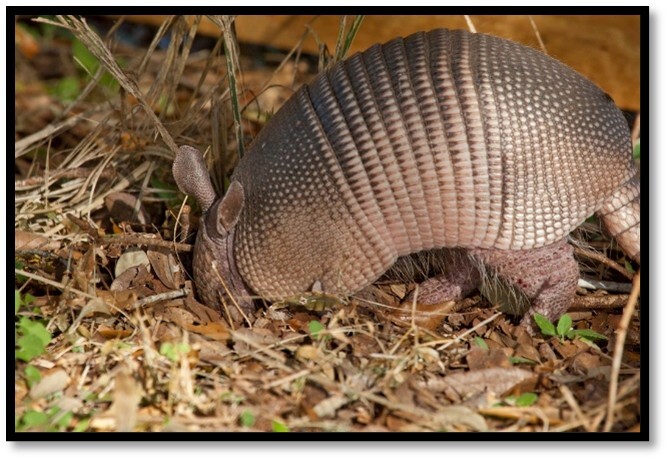
Horses/Cows
Horses and cows aren’t the digging type, but they are large animals and like to push up against fences a lot. This is why we have a fence specifically made for them! Our 2x4 inch fixed knot is a woven wire fence with a 10-gauge top and bottom wire, while the rest of the roll is a 12.5-gauge. This gives the fence extra strength along the top in case they try butting heads along the fence for food. This mesh can be added to your existing pasture fence or even used as a stand-alone fence.
Goats
On average, goats can jump anywhere from 3-5 feet! Goats love to jump, this is why it is recommended you install a 6ft high fence minimum. Like horses and cows, a woven wire is typically used, but a 2-inch mesh is suggested to keep them from getting their heads stuck in the fence while hopping around.
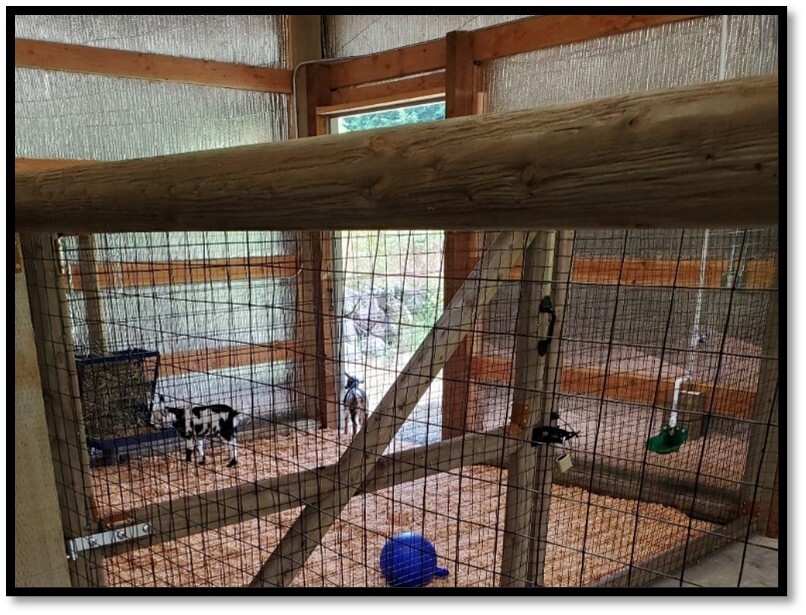
Chickens
While you can use a polypropylene mesh for a chicken fence, it is not recommended to keep your chickens safe. For this we suggest a ½-inch steel mesh (very popular for chicken coops!), with 4 sides and a roof. This will keep your chickens safe from coyotes, chicken hawks, and most snakes! This mesh can be used with our enclosure systems or even added to an existing chicken run made of wood.
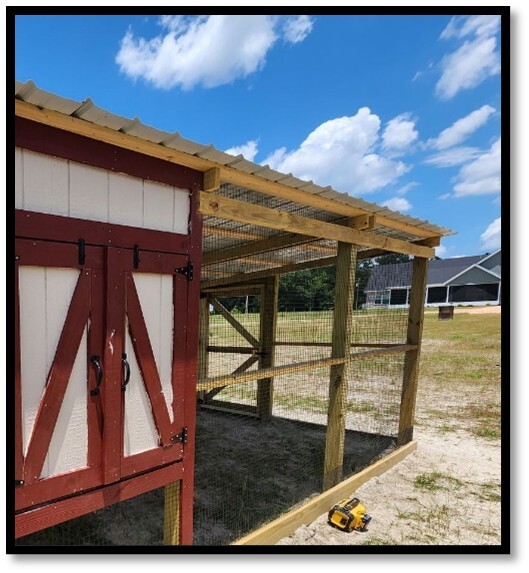
Things to Note
Typically, when you are fighting to keep your yard safe from one type of animal, another will come along and then you have a new problem. This is why we created combination kits. There are over 1000 different kit options available, ranging from kits to keep deer out to kits to keep everything out and your pets in. Take the time to see everything your area has to offer, look up the types of animals you will deal with depending on where you are and then you will be ready to determine what type of fence will be best to keep you, your family, and your land safe!

